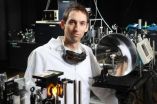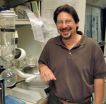Study finds breast cancer incidence rates no longer declining in US women
Change after drop in hormone use did not continue through 2007
2011-03-01
(Press-News.org) ATLANTA –February 28, 2011– A sharp decline in breast cancer incidence rates among non-Hispanic white women in the U.S. after a dramatic drop in the use of postmenopausal hormone therapy did not continue through 2007, according to a new study from the American Cancer Society and the National Cancer Institute. While there are several possible explanations for the recent stabilization, it may indicate that the decrease in breast cancers thought to be related to postmenopausal hormone use has bottomed out. The study appears online in Cancer Epidemiology Biomarkers and Prevention and will appear in a future print issue.
Breast cancer incidence rates among U.S. white women dropped by about 7% between 2002 and 2003 after a dramatic drop in the use of postmenopausal hormone therapy (HT) prompted by the Women's Health Initiative (WHI) study findings in July 2002 on the adverse health effects of combined HT use, including increased risk of breast cancer. To see if that trend continued, researchers led by Carol DeSantis, MPH reviewed data on female invasive breast cancer incidence obtained from the National Cancer Institute's Surveillance, Epidemiology and End Results (SEER) 12 registries for the years 2000-2007. They found the sharp decline in breast cancer incidence rates in non-Hispanic white women between 2002 and 2003 did not continue between 2003 and 2007. There was no significant change in the overall incidence rate for breast cancer among non-Hispanic white women during those years. Meanwhile, non-Hispanic Black and Hispanic women did not experience the steep drop in incidence from 2002-2003 and there were no significant changes in incidence rates among those groups from 2003-2007.
The authors say there are several possible explanations for the recent stabilization in breast cancer incidence rates among non-Hispanic white women in the U.S. First, although the report indicates that postmenopausal HT use has continued to decline through 2008, the decrease in HT use after 2003 may not have been large enough to continue delaying diagnoses. Second, the trends may reflect improved sensitivity of mammography without influence of HT, since HT increases breast density and compromises the diagnostic performance of mammograms and breast biopsies. Also, the rates may in part reflect the relatively stable rates of screening mammography in the U.S. since 2000. Increasing screening rates would have likely increased the number of diagnoses.
###
About the American Cancer Society
The American Cancer Society combines an unyielding passion with nearly a century of experience to save lives and end suffering from cancer. As a global grassroots force of more than three million volunteers, we fight for every birthday threatened by every cancer in every community. We save lives by helping people stay well by preventing cancer or detecting it early; helping people get well by being there for them during and after a cancer diagnosis; by finding cures through investment in groundbreaking discovery; and by fighting back by rallying lawmakers to pass laws to defeat cancer and by rallying communities worldwide to join the fight. As the nation's largest non-governmental investor in cancer research, contributing about $3.4 billion, we turn what we know about cancer into what we do. As a result, more than 11 million people in America who have had cancer and countless more who have avoided it will be celebrating birthdays this year. To learn more about us or to get help, call us any time, day or night, at 1-800-227-2345 or visit cancer.org.
END
ELSE PRESS RELEASES FROM THIS DATE:
2011-03-01
Troy, N.Y. – Benjamin Clough has developed a novel method for eavesdropping on terahertz information hidden in invisible plasma acoustic bursts. The doctoral student at Rensselaer Polytechnic Institute has demonstrated a promising technique that employs sound waves to boost the distance from which researchers can use powerful terahertz technology to remotely detect hidden explosives, chemicals, and other dangerous materials.
Clough, a student in the Department of Electrical, Computer, and Systems Engineering at Rensselaer, is one of three finalists for the 2011 $30,000 ...
2011-03-01
New York University physicists have developed a method for packing microscopic spheres that could lead to improvements in commercial products ranging from pharmaceutical lotions to ice cream. Their work, which relies on an innovative application of statistical mechanics, appears in the Proceedings of the National Academy of Sciences.
The study aimed to manipulate the properties of emulsions, which are a mixture of two or more immiscible liquids. The NYU researchers examined droplets of oil in water, which form the basis of a range of consumer products, including butter, ...
2011-03-01
New York University researchers have isolated neural activity that reflects basic mechanisms used by the brain to combine elementary pieces of language in order to construct complex ideas.
The study, which appears in the Journal of Neuroscience, was conducted by Douglas Bemis, a graduate student in NYU's Department of Psychology, and Liina Pylkkänen, an associate professor in NYU's Department of Psychology and Department of Linguistics.
Researchers have long studied the neural regions that underlie the processing of complete sentences and other complex linguistic ...
2011-03-01
More than 45 years after the Civil Rights Act of 1964, National Science Foundation (NSF) statistics show minority academic institutions still enroll a substantial number of minority students, but the percentage of minorities earning bachelor's degrees in science and engineering (S&E) from minority-serving institutions has declined over time.
Statistics published today in a report titled "Women, Minorities, and Persons with Disabilities in Science and Engineering: 2011" show that 26 percent of blacks earned S&E bachelor's degrees from historically black colleges and universities ...
2011-03-01
PHILADELPHIA – Recently, a research team from the Department of Emergency Medicine at Jefferson Medical College of Thomas Jefferson University discovered an alarming amount of lead contamination in ceramic cooking and eating utensils sold in Philadelphia's Chinatown. The team, led be Gerald O'Malley, D.O., director of Clinical Research; and Thomas Gilmore, M.D., resident, purchased and tested a sampling of Chinese ceramics. Using a LeadCheck®, one area on each item was rubbed with a lead-detecting solution. In almost 30 percent of the items, the area turned pink or red, ...
2011-03-01
CHAMPAIGN, lll. — A farmer in Niger learns how to protect his crops from insects. A resident of Port-au-Prince or a rural Haitian village learns how to avoid exposure to cholera. An entrepreneur in Mali gets step-by-step instructions on extracting the oil from shea seeds to make shea butter she can sell at a local market.
These people are benefiting from a new approach to sustainable development education that reaches a much larger audience than traditional methods – and at a fraction of the cost. The initiative, led by a team of extension educators and faculty at the ...
2011-03-01
FAIRFAX, Va., February 28, 2011—Death can be terrifying. Recognizing that death is inescapable and unpredictable makes us incredibly vulnerable, and can invoke feelings of anxiety, hatred and fear. But new research by George Mason University psychology professor Todd Kashdan shows that being a mindful person not only makes you generally more tolerant and less defensive, but it can also actually neutralize fears of dying and death.
"Mindfulness is being open, receptive, and attentive to whatever is unfolding in the present moment," says Kashdan. In his latest research, ...
2011-03-01
Sanfilippo disease is a rare disorder caused by the failure of enzymes to break down specific kinds of complex carbohydrates, resulting in their accumulation in cells and often severe physical and neurological problems – and sometimes early death.
In a paper published in the March 4 issue of the Journal of Biological Chemistry, researchers at the University of California, San Diego School of Medicine, led by Jeffrey D. Esko, PhD, professor in the Department of Cellular and Molecular Medicine, describe the build-up of a novel secondary metabolite in Sanfilippo disease, ...
2011-03-01
A Wayne State University School of Medicine physician-researcher has developed a personalized therapy to treat a wide range of cancers. The treatment is based on a naturally occurring human enzyme that has been genetically modified to fool cancer cells into killing themselves.
The unique concept, patented by Wayne State University, was successfully demonstrated on melanoma cells that are resistant to routine treatments such as chemotherapy or radiotherapy. Melanoma is a perfect model for testing this new therapy because it is considered the most aggressive form of human ...
2011-03-01
If Dr. Doolittle is famous for talking to animals, then here's a story that might make him hold his tongue: According to new research published online in The FASEB Journal (http://www.fasebj.org), scientists have successfully fused human stem cells derived from subcutaneous adipose (fat) tissue with muscle cells from rat hearts. Not only did these cells "talk" to form new muscle cells altogether, but they actually beat.
"Recovery of regenerative cells located in the stromal vascular fraction of a patient's own subcutaneous tissue is relatively simple and can be used for ...
LAST 30 PRESS RELEASES:
[Press-News.org] Study finds breast cancer incidence rates no longer declining in US women
Change after drop in hormone use did not continue through 2007


